To coin a phrase from shoegazer legends Curve, this past year was one split into fractions. On one hand, it was fraught with news that should have pushed music and other minor matters far down one’s list of things to think about. On the other hand, it might be argued that 2005’s natural disasters, political fervor, and religious upheaval made it okay — maybe even necessary — for music fans to find solace in all that is dance.Performers retreated similarly in order to follow their own muses, and democratized access to DIY music production surely resulted in more than a few shooting stars (Clap Your Hands Say Yeah!, Four Tet) with their origins in a bedroom or garage. Far more common an inspiration than hands-on experience was real life experience. Ryan Adams, MF Doom, and Bright Eyes’ Conor Oberst had multiple albums’ worth of confessions; they had to sound good or else the performers ran the risk of nobody paying attention.
Then there was M.I.A., who in one neo-hip-hop album added up the social and political fractions of three worlds: the brown-skinned world, the white-educated world, and the world of one glommed onto the other. Indeed, 2005 was the year that rap and pop, music long meant for dancing, seemingly went to college. Preps egged on girls to go ahead and get down; cheerleaders exchanged stories of guys going b-a-n-a-n-a-s over their humps; Kelly Clarkson, for lack of a better term, graduated; Mariah Carey returned as diva emerita.
We also saw Big Rock take on Big Politics and actually fight to a draw. U2 seemed positively beatific in their work with causes like ONE, DATA, and Live 8 layered on top of the year’s biggest concert tour. Coldplay proved they are U2’s charitable heir apparent, with Chris Martin’s hand, piano, and interviews branded by Make Trade Fair. The American Idiot drama played out in videos and in concert while System of a Down quietly (!) created their own historic rock opera; Mezmerize and Hypnotize not only stole Green Day’s thunder and spit it back out as lightning, the albums actually owed more to classical opera than to rock.
Rock’s sea change, however, was its broad acceptance of technology (both vintage and modern) in order to get scenesters to keep pace with actual rhythm by actually dancing. This dance-rock revolution seemed squarely focused on derivatives of British bands that often used electronics as foundations for herky-jerky guitar-based angst. Gang of Four and The Fall kept appearing as reference points through 2005, but the performers and influences here actually cover far more ground. With nods to Joy Division (see: She Wants Revenge), XTC (see: Hot Hot Heat), Duran Duran (see: The Killers), and the Madchester scene (see: Kasabian), it’s obvious the sound’s been around so long it deserves a Pandora.com roadmap instead of a pigeonhole.
All of this makes 2005’s mxdwn.com Album of the Year countdown that much more of a trend-bucking curiosity. Four of our top five albums split the dance-rock phenomenon into its representative fractions. Three focus primarily on the “dance” of it all, the beats and beeps, even if not all of it is immediately danceable; one makes “rock” that is wholly intelligent even if only occasionally catchy. As for that fifth and final album, nowhere could we find a more perfect hybrid of rhythm and rebellion.
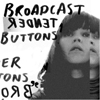

5. Broadcast – Tender Buttons
Broadcast vocalist Trish Keenan assured fans that the central theme of Tender Buttons was letting go. True, the album is their first since jettisoning three members (only Keenan and James Cargill remain) and “Michael A Grammar,” one of its few straightforward tracks, even features a “let go” mantra, but the music lingers long after the music stops.
That’s not so much because the band keeps wrapping around listeners the sonic cocoon they began with 1997’s Work and Non-Work singles. They don’t — at their reduced size and capacity, they really can’t. Instead, like the newborn butterfly, Tender Buttons is a frail and fractured beauty.
The “memories of memories” to which Keenan refers in “Arc of a Journey” reside in a new consciousness buttressed by a curiosity with the spare and artificial instead of the expansive and organic. Songs like “Tears in the Typing Pool” move the “do-do’n’do-do” of Petula Clark and the Gilberto girls to the imagined, antiseptic cocktail lounges of the 24th century.
Sonic texturing on Tender Buttons is musical stucco, all buttons to push and very little that’s tender. What passes for soft and sexy is “Corporeal,” passive-aggressive poetry over AFX-meets-surf-guitar loops, and “Goodbye Girls,” Keenan’s paean to prostitutes. Broadcast steps backward to move forward, challenging listeners and themselves to find “a cyclone full of feeling” in “the silence of the moon.”
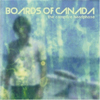

4. Boards of Canada – The Campfire Headphase
Portishead has been off the radar for going on eight years now. Richard D. James is perfectly content to hide in his hi-energy AFX alter ego. Massive Attack is off on a dark, dank, clattering soundtrack tangent. Boom Bip, Caribou, Sigur Ros, and Four Tet comprised an altogether decent mid-card battle royale in 2005, but you can not discuss anyone’s residence at the low-key end of mainstream electronica — the ambient, downtempo, trip-hoppiness of it all — without acknowledging the current influence and reputation of Scotland’s lo-fi mystery men, Boards of Canada. Heck, you can’t even spell “Broadcast” without “Boards.”
This past year, musicians of all stripes got things off their chests and relayed complex stories through song cycles and multiple album releases. What boggles the mind about the Sandison brothers is that their latest chapter, The Campfire Headphase, continues a sonic tale that began properly over seven years ago. It’s a campfire story of growth and development, celebrating (in relaxed, playful loops like those of “Chromakey Dreamcoat”) and eventually deleting (through the slow, soft denouement of “Faraway Fire”) the sonic essence of youthful innocence first embraced on Music Has the Right to Children.
The Campfire Headphase, like Children and like Geogaddi between them, is the music of missing pieces and accidental, haphazard assembly. Boards of Canada are notorious for reclusively geeking out on warm acoustic guitars and vaguely disturbing analog synthesizers. They approximate what it might be like to disappear for years into a library, needing to piece together archival recordings and educational filmstrips into the songs and voices of imaginary friends. On The Campfire Headphase, Boards of Canada don’t just write the tale or its soundtrack, they live it. All this, and it may not even be their best album.
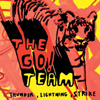

3. The Go! Team – Thunder, Lightning, Strike
A number of bands with mid-to-late-year releases flew under the best-of-2004 radar, only to fill critics’ ears, viewers’ eyes, and concert halls throughout 2005. For those artists who feel slighted in this fashion we offer a piece of advice: Instead of making the musical grenade that hangs around for a while before it goes “bang,” consider making one that goes “pop!” — and don’t you dare leave out the exclamation point. That’s what The Go! Team went and did on Thunder, Lightning, Strike.
The album and its lead single “Ladyflash” started making the rounds overseas in the second half of 2004. Through the good graces of Columbia Records, the pattern was repeated in the U.S. around the same time this year. (Might the same thing happen when Metropolis brings Electric Six’ year-old Senor Smoke stateside in February 2006?) Never underestimate the power of lead time; we Yankees ended up getting fragged by an album that doesn’t rock so much as it rolls.
If Thunder, Lightning, Strike were to simply be admired as soda-pop sampledelica, it could stand on its own against behemoths like The Avalanches’ tongue-in-cheek Since I Left You or DJ Shadow’s brooding Endtroducing…. The center of this album, “The Power is On” through “Bottle Rocket,” proves this is more than just a band that knows their way around technology or a bunch of tweakers who can handle actual instruments.
It’s damn near impossible to tell what needed clearances and what needed actual rehearsal time. For one thing, if there wasn’t a single sample on Thunder, Lightning, Strike The Go! Team’s four members with “drums” to their credit could easily make up the difference. For another thing, topping it all off is vocalist Ninja. The Go! Team’s secret weapon, she sounds like she’s led a spirit squad or two. In her and the rest of the female half of the team, we find a more than reasonable facsimile of the 1960s girl-group singers and 1980s proto-fly-girls for which you’d gladly offer up your eye teeth to have on vinyl.
They are representative of the gritty, all-too-human approach that lets The Go! Team keep one foot in the world of indie rock and one in the world of indie-tronica, much more so than the seemingly single-minded LCD Soundsystem. As comfortable sampling Archie Bell and the Drells as they are tuning down Weezer’s “Surf Wax America,” The Go! Team moves toward something more cohesive than the mere whiz-bang wonder of cutting and pasting disparate sounds. If anything, they spliced the DNA of De La Soul’s “A Roller Skating Jam Named Saturdays” with that of the Starsky & Hutch theme and published their findings to benefit those in search of the almighty groove.
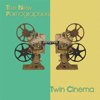

2. The New Pornographers – Twin Cinema
At long last, the occasionally sunny Seattle music scene seems to be rubbing off on nearby Vancouver, British Columbia. Where that city’s few notable rock acts had been by turns angry (Strapping Young Lad, The Subhumans) and morbid (Front Line Assembly, Skinny Puppy), it’s now the home base for a loose collective of Canucks who see no problem stubbornly crisscrossing the rock’n’roll map, laughing at themselves and the results.
“We have arrived too late to play the bleeding heart show,” say The New Pornographers, a statement informed equally by aw-shucks innocence and the quirks of a get-in-the-van lifestyle. They’ve logged a ton of miles on their own schedules with their own bands — Destroyer and Zumpano among them — as well as with this supergroup, yet they still approach their third album, Twin Cinema, with wide-eyed wonder and enthusiasm enough to match their significant ability.
Writing contributions from Zumpano member Daniel Bejar have increased from The New Pornographers’ prior two albums. Nora O’Connor of The Blacks and pianist Kathryn Calder provide more vocal depth as well. Still, this band and album is very much led by singer/songwriter Neko Case and Destroyer’s Carl Newman, the dynamic musical duo that Jack and Meg White wish they were.
The skill gathered here allows artist and listener alike to get cozy with a wide range of wholly entertaining hyphenates on Twin Cinema: It’s an orgy of post-punk, power-pop, folk-rock, alt-country, bar-band roots-rock and more. In the middle of 2005’s dance-rock craze, such a complex equation will only result in head-nodding, or pogoing at the most, but you’re going to enjoy every second of it; even ignorance of the underlying songcraft is still bliss. This stable of influences gives The New Pornographers a smart sound that references various points of musical history yet is ultimately, unequivocally theirs.
The waltz-time “Falling Through Your Clothes” performs like the runout-groove sound collage at the end of Sgt. Pepper’s Lonely Hearts Club Band made tuneful. There’s Newman’s lilting advisory on “listenin’ too long / to one song / Sing me Spanish techno.” “Jackie, Dressed in Cobras” and “The Jessica Numbers,” the latter with its inverted pyramid of 11 chords and drum hits announcing new verses, border on math rock. “These Are the Fables” puts Case and the group’s harmonies squarely in the spotlight, echoing bubblegum rock from ’90s female-centric acts like The Innocence Mission, Velocity Girl, and Suddenly, Tammy!
Most often, however, they’re trading notes with more than a few fellow musicians just south of the border, namely newfangled Sleater-Kinney (“Three or Four”) and old-school Posies (“Use It,” “Star Bodies”) down in Washington and, yes, even those nice White Stripes kids (“Streets of Fire,” “The Bones of an Idol”) from over in the Motor City. More interested in a sound and feel than in actual storytelling, The New Pornographers’ notes better resemble lines that require reading between. Whoever does that reading will end up getting far more out of Twin Cinema than what Neko Case and company get in return.
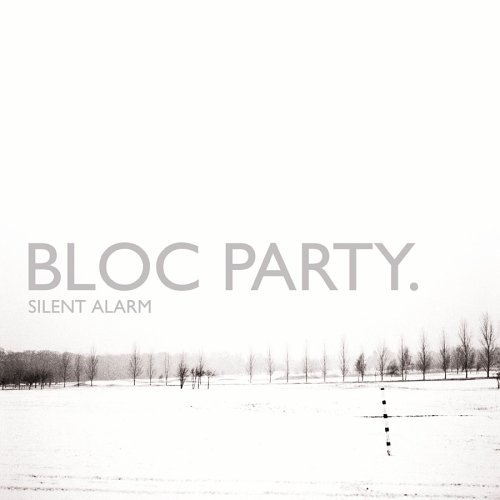

1. Bloc Party – Silent Alarm
The Arcade Fire and Modest Mouse began (and Clap Your Hands Say Yeah! continues) the process of channeling the creative art-student side of Talking Heads, a lone American inspiration for today’s dance-rockers. Bloc Party instead choose to focus on the nervous art-student side, the jittery side that skittishly muses about everything from love to the price of gas.
Such discussions are translated through production on their debut LP, Silent Alarm, that’s as crisp as the snowy day on which the album’s cover photo was taken. Save for occasional diversions into plangent, chiming atmospherics, drummer Matt Tong sounds like he’s using seven hands to hit kits in three different locations, an effect particularly noticeable in headphones, while the remaining members — lead singer/guitarist Kele Okereke, guitarist Gordon Lissack, bassist Gordon Moakes — buzzsaw their way through the rest of the songwriting.
Somehow, for all of their yelped, electrified worry, Bloc Party’s alarm is indeed silent, their mission covert. Their songs have this nasty habit of looking like one thing and being another. The ambient guitar becomes the pounding drum pulse, the mash note becomes the Dear Jane letter, the anti-war missive is really a personal manifesto. “We will not be the last,” claims “Pioneers.” Who’s this “we”? “The last” what? Are we talking about kids or soldiers here, abject failures or diamonds in the rough? There’s that jittery art student again, setting to music his scribbled poetry full of twists like double entendres, whiplash cynicism, and the occasional glimpse of hope.
The best twists, the ones most indicative of Bloc Party’s talent, come courtesy of a song called “Helicopter.” It was their most blatant statement song on a statement album in a year that saw surprisingly few, and half of those from Bloc Party’s side of the pond. Best Twist #1 was that you probably didn’t realize a statement was there in the first place because you were shaking your Sparks-drinking ass to the track — harder, in fact, than you did to lead single “Banquet.”
Best Twist #2? This song named after a vehicle of police-action havoc was initially a harsh-enough condemnation of President George W. Bush and the war in Iraq — “Better luck next time / Just like his Dad.” For better or worse, it took on sad new meaning as a song named after a vehicle of broad surveillance and pinpoint rescue if you heard it in the aftermath of Hurricane Katrina.
Not since Nirvana’s Nevermind has a bunch of articulate yet somehow disaffected youth made such cold and calculated efforts to cloak their message of disaffectedness in music that brought like-minded kids to the dance floor. Furthermore, that was also the last time an album was prepared so you could hit “play” on it at just about any point and make a case for moving the next sound you heard directly to heavy rotation. A good three-quarters of the tracks on Nevermind got radio play even though there weren’t nearly that many singles taken from it. Silent Alarm has the same power and with it, the same reach.
From that cover photo forward, it seems every detail of Silent Alarm was made to blur the line between chilly and chilling. It’s as if someone dumped Bloc Party in an icy wasteland with only enough resources to keep their instruments going. Cold and calculated, indeed: They huddle together to keep their ballads warm; they flail and roam to keep the circulation going during their rockers. They play desperate, like their lives depended on it, like that alone could generate sufficient heat and the heat could generate light. Where it gets chilling, as in frightening, is that the world actually is a little brighter and better for having this album in it.
